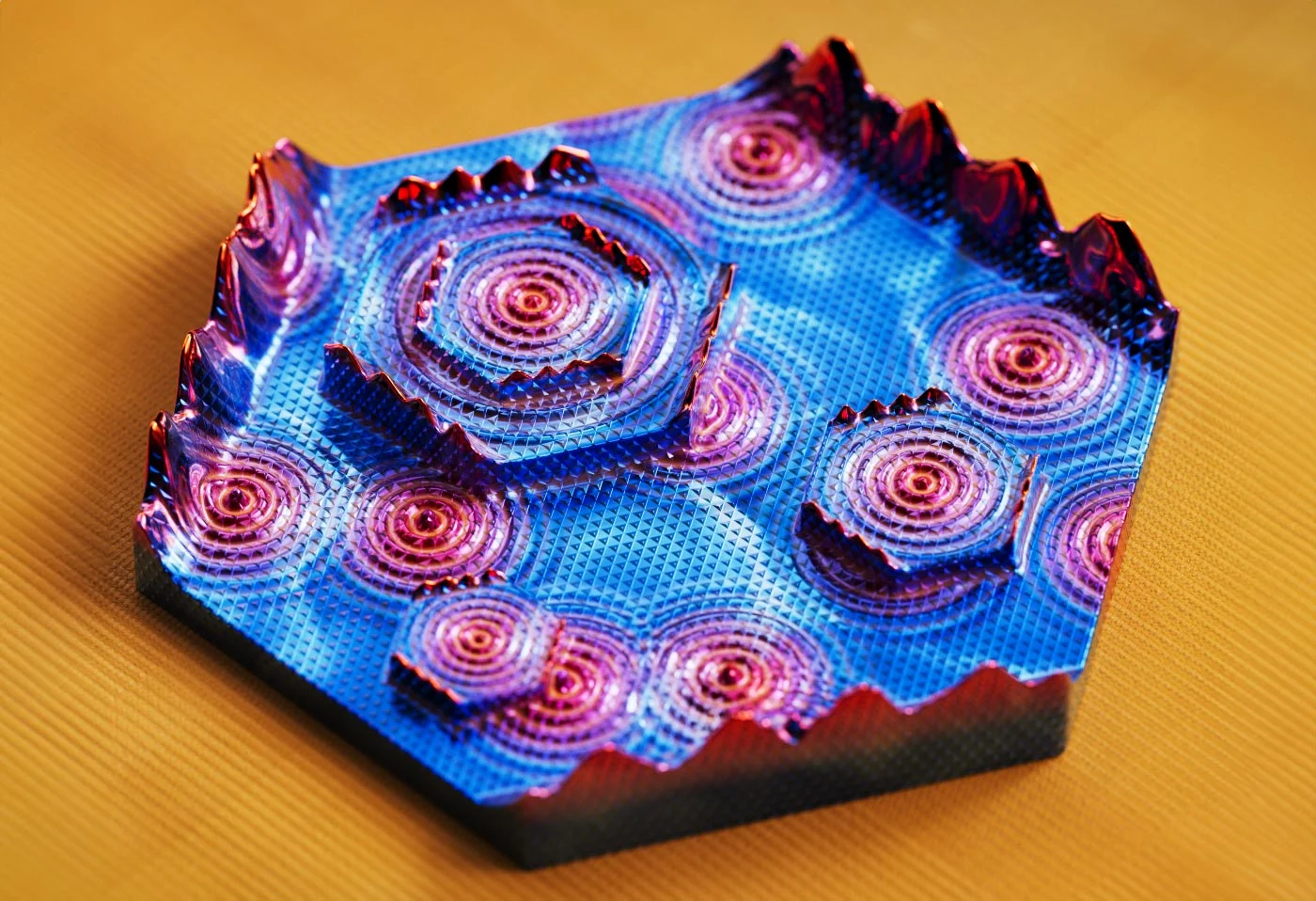Researchers removed resistance from electron channels. That means electrons can travel without resistance. And this is an advance in long-range quantum communication. Quantum computers can benefit from these non-resistant electron channels In the quantum computer's internal data transportation. The long-range quantum communication in qubit form requires that there is no resistance. Resistance is the thing that destroys data in the qubit.
And the thing. What makes quantum communication secure is that. The system packs data into the physical thing like electrons. The problem is that the system must keep information in the electron. Resistance will destroy that information. So this is why the resistance must removed. And researchers working with room-temperature superconductors.
"A representation of data visualization of quantum states of electrons on the surface and edge of grey arsenic crystal obtained using a scanning tunneling microscope at Princeton’s physics department. Credit: Image based on STM data simulations prepared by Shafayat Hossain and the Zahid Hasan group at the Laboratory for Topological Quantum Matter at Princeton University" (ScitechDaily, Elemental Surprise: Physicists Discover a New Quantum State)
The new quantum state is an interesting thing. Maybe the universe is the network of quantum fields. And the particles and planets and stars form at the cross points that network.
The crossing quantum fields can form the point of reference. There is the possibility that those points can be superpositioned and entangled. Those quantum points of reference make system possible to create a 2D quantum network.
In some models, the universe is the quantum network that is full of subnetworks. When those quantum fields cross. They form virtual material that starts packing material around them. When we think that two black holes form two smaller black holes. And then those two black holes form lighter and lighter objects. And if that theory is right smallest or lowest energy points of that internal network form the elementary particles like quarks and leptons.
But another thing is that this new quantum state can also give answers to how the black holes will start to interact in a very old universe. It's possible. That those exploding black holes can create those cross points and start to form a new universe. Or maybe this was too sudden a conclusion.
Those crossing quantum fields can also play a vital role in the birth of stars. That crossing point is the thing that acts like virtual material and starts to pack material around it. If researchers can calculate those points they might find many things like a new supermassive black hole.
https://scitechdaily.com/elemental-surprise-physicists-discover-a-new-quantum-state/
https://scitechdaily.com/quantum-control-unlocked-creating-resistance-free-electron-channels/






No comments:
Post a Comment
Note: Only a member of this blog may post a comment.